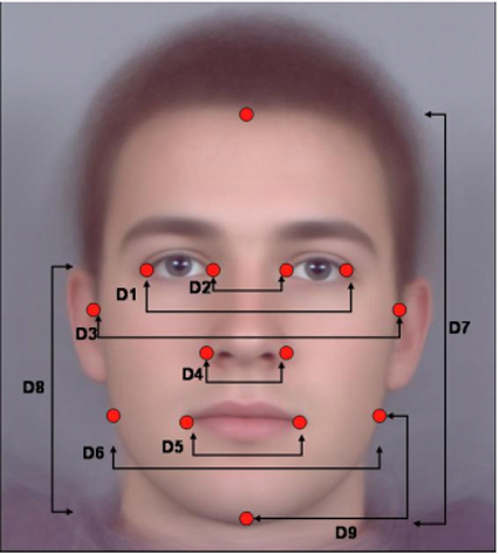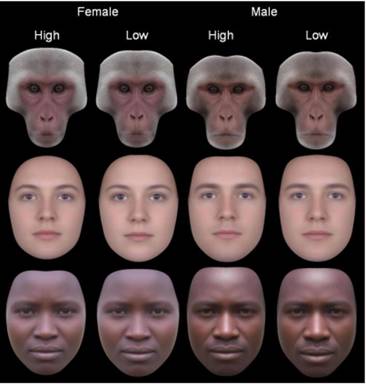In humans, faces are an important source of social information. One property of faces that is rapidly noticed is attractiveness. Research has highlighted symmetry and sexual dimorphism (how masculine/feminine a face is) as important variables that determine a face’s attractiveness.
But why are these traits attractive?
One idea is that both traits are adverts of genetic quality or some other aspect of quality such as fertility. An alternative view is that preferences for these traits arise through visual experience and therefore not linked to any underlying biological factors. Faces certainly have the potential to be advertisements of mate ‘quality’ and one way to examine this idea is to look at interrelationships between proposed adverts of quality.

Anthony Little of the University of Stirling and colleagues show that measurements of symmetry and sexual dimorphism from faces are related in humans, both in Europeans and African hunter-gatherers, and in a non-human primate. In all samples, symmetric males had more masculine facial proportions and symmetric females had more feminine facial proportions.
The findings therefore support the claim that sexual dimorphism and symmetry in faces are signals advertising quality by providing evidence that there must be a biological mechanism linking the two traits during development. For example, individuals resistant to disease may be able to grow both symmetric and sexually dimorphic. Such work also suggests that faces may advertise quality across different human populations and even across different primate species.

The researchers are currently collecting data on human perceptions of facial beauty at www.alittlelab.com, which also presents more information about their work.
Citation: Little AC, Jones BC, Waitt C, Tiddeman BP, Feinberg DR, et al. (2008) Symmetry Is Related to Sexual Dimorphism in Faces: Data Across Culture and Species. PLoS ONE 3(5): e2106. doi:10.1371/journal.pone.0002106






Comments